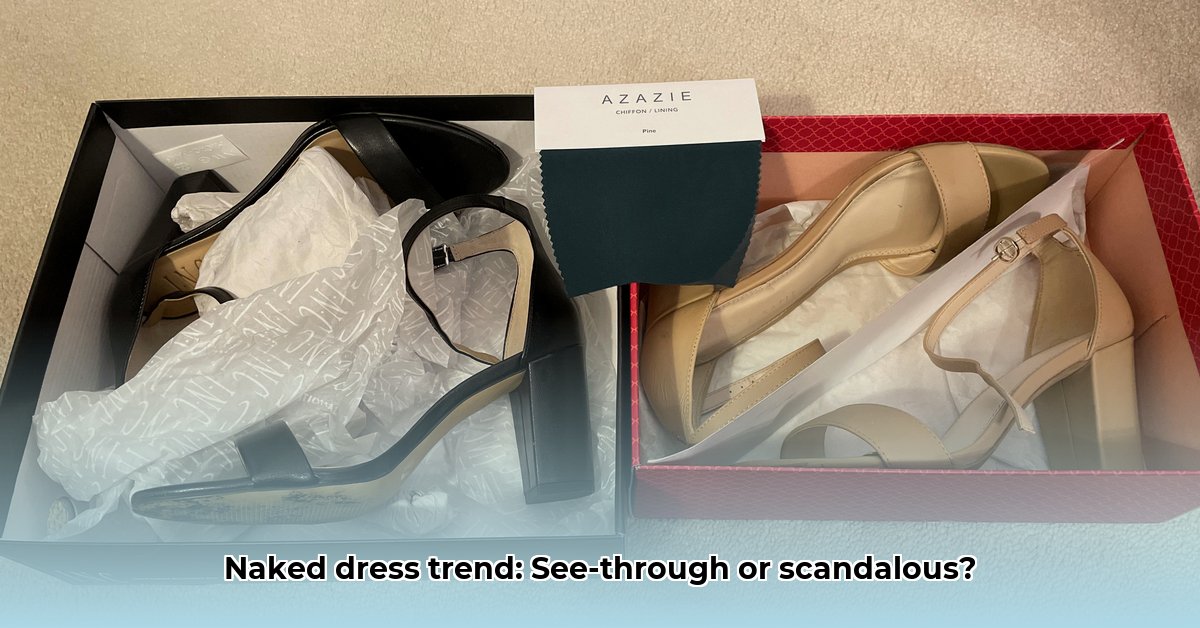
The "naked dress" trend, a captivating yet controversial phenomenon, has sparked a multifaceted debate: is it a bold statement of empowerment or a step too far? This discussion blends fashion, societal norms, and personal interpretation, creating a complex picture far beyond a simple "dress vs. nude" dichotomy. This article delves into the design elements, cultural impact, market adoption, and inclusivity concerns surrounding this intriguing fashion statement.
Design Elements: The Art of Illusion
The naked dress isn't about literal nudity; it's about the illusion of it. Designers masterfully create this effect using sheer fabrics like lace, tulle, or mesh, strategically placed cutouts, and body-hugging silhouettes. The result is a captivating interplay of concealment and revelation, a visually stunning paradox that is both alluring and provocative. Intricate details, such as delicate embroidery on translucent fabrics or carefully crafted panels, add to the overall effect. These garments aren't merely clothes; they are artistic statements pushing the boundaries of conventional attire. How effectively do these designs create the intended illusion, and how does that impact consumer perception?
Cultural Impact: A Multifaceted Mirror
Public reaction to the naked dress is diverse. Some see it as a powerful statement of body positivity and self-acceptance, a reclamation of female sexuality presented on the wearer's terms. Others, however, express concerns about potential exploitation and objectification, arguing the trend might perpetuate unrealistic beauty standards. The naked dress, therefore, acts as a societal mirror, reflecting our evolving attitudes toward female representation and the complex interplay between fashion and societal expectations. This ongoing debate highlights a broader conversation about female empowerment and challenges traditional viewpoints. What is the balance between empowerment and objectification in the public perception of the naked dress?
Market Adoption: A Trend's Evolving Trajectory
Initially popularized by celebrities on red carpets, the naked dress has infiltrated mainstream fashion. High street brands offer more affordable versions, while high-fashion designers create couture pieces, showcasing its broad appeal. However, its long-term market viability remains uncertain. Some market analyses suggest a potential plateau in popularity, particularly among younger demographics. The naked dress's future trajectory remains to be seen—will it be a fleeting trend or a recurring motif in fashion? What factors will determine its enduring presence in the market?
Inclusivity: A Dress for Everyone?
A crucial aspect is inclusivity. Does the naked dress cater to all body types and skin tones, or does it inadvertently exclude those who don't fit a specific aesthetic ideal? The sheer nature of these garments can potentially highlight perceived imperfections, raising concerns about body image and representation. While some designers are working towards more inclusive sizing and designs, the question remains whether the overall trend is genuinely representative of diverse body types. Does the aspiration towards a specific body type reinforce existing biases within the fashion industry? How can designers promote inclusivity within the parameters of this trend?
Actionable Intelligence: A Continuous Conversation
The naked dress is a dynamic style constantly being reinterpreted and reimagined. It’s a conversation, evolving and engaging with current social and cultural changes. Understanding audience reactions, designer interpretations, and market trends is crucial in comprehending its lasting influence. Further research into its long-term impact will likely reveal more about its lasting influence on fashion and broader societal views. What are the key indicators that will help us determine the long-term influence and trajectory of this fashion trend?
Key Takeaways:
- The naked dress trend necessitates a comprehensive analysis considering design, culture, market, and inclusivity.
- Public perception is divided, reflecting broader societal debates on female empowerment and body image.
- Market viability remains uncertain; the trend's longevity depends on several evolving factors.
- Inclusivity concerns highlight the need for designers to create garments that are representative of diverse body types.
- The naked dress is a dynamic conversation, constantly evolving in response to social and cultural changes.